Understanding the i1 Diamond Rating and Its Impact
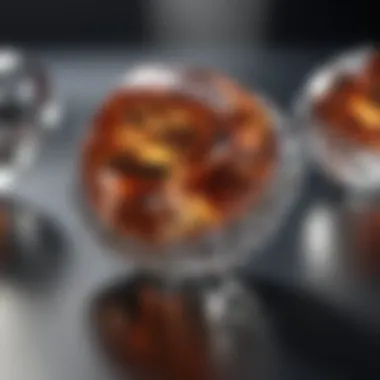
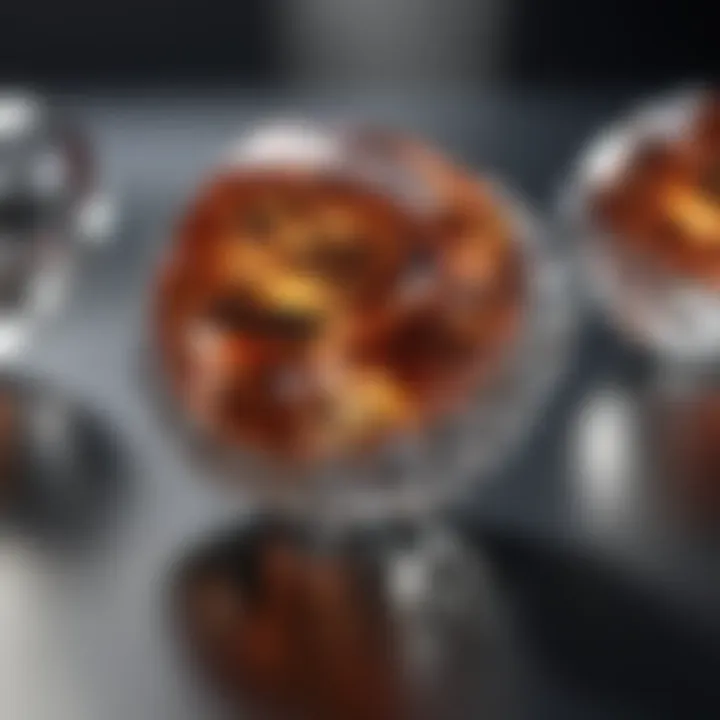
Intro
When it comes to the dazzling world of gemstones, diamonds stand out not just because of their brilliance but also due to the nuances involved in their valuation. Among these nuances is the i1 diamond rating, which raises questions for both buyers and purveyors alike. Understanding this rating is crucial, as it has implications that can sway purchasing decisions, influence perceptions, and ultimately guide buyers in navigating the market's complexities. From assessing clarity to examining market trends, this article aims to dissect the various layers surrounding the i1 diamond rating, providing insights that empower readers to make educated choices when investing in these precious stones.
Gemstone Overview
Definition of Gemstones
Gemstones, often regarded as nature's art, are minerals or organic materials prized for their beauty, rarity, and durability. Not every shiny rock falls into this category, however. To be classified as a gemstone, a material must achieve significance in terms of aesthetics as well as cultural or historical value. Diamonds, rubies, sapphires, and emeralds are just a few examples of what constitute high-value gemstones, often sought after for personal adornment or investment.
Classification of Gemstones
Gemstones are generally divided into two main categories: precious and semi-precious. Traditionally, the term "precious" is reserved for diamonds, emeralds, rubies, and sapphires, reflecting their high market demand. The semi-precious category, on the other hand, includes a wide array of stones such as amethyst, garnet, and turquoise.
Often, this classification directly influences a stone's valuation and desirability.
- Precious Gemstones
- Semi-Precious Gemstones
- Diamonds
- Rubies
- Sapphires
- Emeralds
- Amethyst
- Garnet
- Aquamarine
- Turquoise
Historical Significance
Origins of Gemstone Use
Humans have adorned themselves with gemstones for millennia. The allure of these stones can be traced back to ancient civilizations. For example, in ancient Egypt, gemstones were not just decorative; they were believed to hold magical properties and were thought to offer protection in the afterlife. Jewelry made from lapis lazuli and turquoise were particularly cherished, symbolizing power and divine favor.
Cultural Insights: Gemstones in Ancient Civilizations
Different cultures have placed various significances on gemstones throughout history. For instance, in India, gemstones play a vital role in astrology, where each stone is associated with celestial bodies and is believed to bring specific benefits based on the wearer’s birth chart. In contrast, the Romans valued pearls and diamonds for their rarity and beauty, intertwining them with social status and wealth.
"Diamonds are a girl's best friend"—while this phrase seems trivial today, it echoes a long-standing relationship between femininity and valuable gems.
Understanding the historical significance of gemstones sets the foundation for grasping their modern implications, including the i1 diamond rating. This exploration into the fabric of gemstone history provides a rich context for the subsequent scrutiny of diamond grading, specifically focusing on clarity, as it affects not only consumer choices but also the integrity of the gemstone market.
Preface to Diamond Ratings
Understanding diamond ratings serves as the cornerstone for anyone delving into the world of gemstones, particularly in today’s market where clarity grading plays a pivotal role. The intricacies of how diamonds are rated can either enhance or diminish their allure, and thus having a firm grasp on these ratings is not just helpful—it’s essential. Navigating through this section will shine a light on the various factors that influence these ratings and how they impact consumer choices.
Definition of Diamond Ratings
The term "diamond ratings" is a classification system assigned to diamonds based on various criteria, predominantly focusing on clarity, color, cut, and carat weight. These aspects are pivotal in establishing the overall quality of a diamond. Diamond clarity ratings, for instance, categorize these precious stones based on the presence or absence of imperfections, known as inclusions or blemishes.
When you hear about ratings such as VVS (Very Very Slightly Included) or SI (Slightly Included), you are diving into a metric system that helps buyers gauge the intrinsic value of their potential purchase. Familiarity with these definitions not only equates to informed choices but also empowers consumers in negotiations, ensuring they aren’t shortchanged during their purchase.
Importance of Clarity in Diamonds
Clarity can be likened to a diamond’s fingerprint; it tells the story of the gem, showcasing its uniqueness. The clarity grade can affect not just the visual appeal of the stone, but also its economic worth. The more pristine the diamond appears, the higher the demand usually is.
Additionally, clarity plays a critical role in how well a diamond reflects light, translating to brilliance and sparkle. Higher clarity grades generally contribute to a more vibrant visual display. Thus, clarity isn’t merely a number; it's an integral character trait that can determine how a diamond interacts with light, potentially impacting its overall aesthetic and desirability.
In summary, understanding clarity in diamonds equips consumers with the knowledge to navigate diamond buying like a pro. It's not just about knowing the glitter and shine; it's about recognizing the depth of quality that lies beneath the surface.
The i1 Diamond Rating Explained
Understanding the i1 diamond rating is crucial for anyone involved in the diamond industry or even just thinking about purchasing a diamond. This rating serves as a guide, shedding light on the clarity of diamonds that carry this label. It's not just a number; it has real implications for what you can expect in terms of appearance and value. When potential buyers start their journey, they often bump into the world of clarity ratings, where terms like VVS, VS, SI, and i1 might seem like a confusing jumble.
What does the i1 rating mean in this context? It means that this diamond has inclusions that are noticeable to the naked eye. While this might sound alarming at first, it’s important to understand that these inclusions do not render the diamond worthless. In fact, for budget-conscious buyers or those looking for a unique piece of jewelry, i1 diamonds offer a tremendous opportunity for value.
Moreover, the i1 rating can also have implications for retailers. Understanding where i1 diamonds fit into their inventory allows them to cater to a broad range of customers, from luxury shoppers looking for pristine stones to those seeking something special yet affordable.
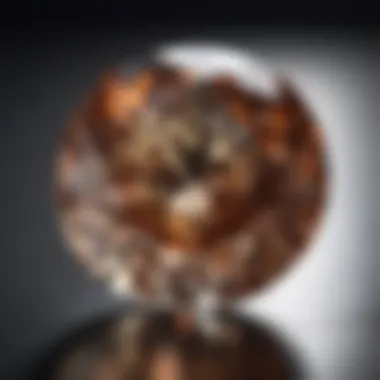
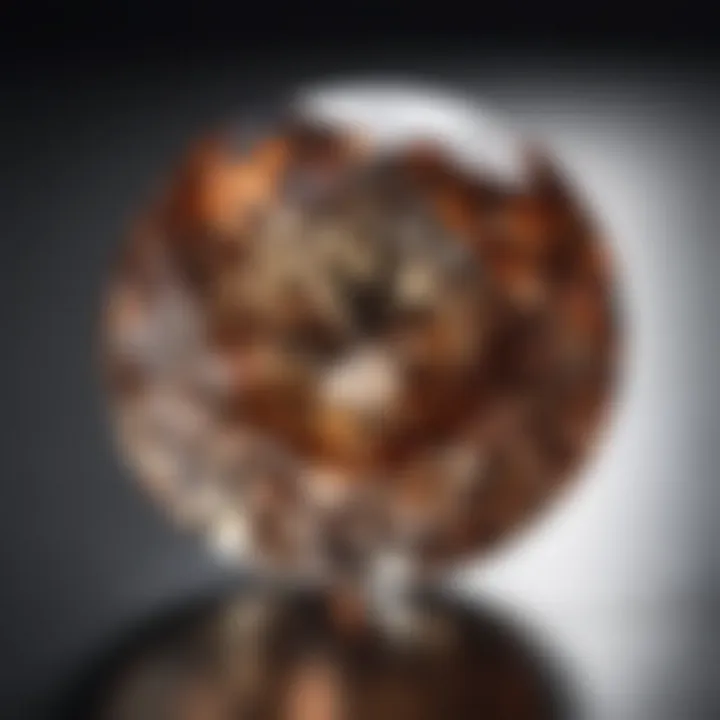
Criteria for i1 Rating
To earn an i1 rating, a diamond must meet specific criteria set by industry standards. Primarily, this rating indicates that the diamond possesses inclusions that can usually be seen without magnification. Here are the key elements that define an i1 diamond:
- Visibility of Inclusions: Inclusions can appear as dark spots, clouds, or other anomalies within the stone. They are easily noticeable to the untrained eye.
- Impact on Brilliance: While inclusions are present, they can affect the diamond's brilliance or sparkle. However, it doesn’t necessarily ruin the overall aesthetic—in fact, some people might find character in these imperfections.
- Degree of Inclusion: There can be a variance in how these inclusions are distributed within the diamond. Some diamonds may have just a few small marks, while others may have more pronounced characteristics, creating a unique look.
Evaluating i1 diamonds carefully is critical for both traders and buyers.
Comparison with Other Clarity Grades
When comparing i1 diamonds with other clarity grades, it becomes clear how they fit into the broader picture of diamond quality. The clarity scale runs from Flawless (no inclusions visible under 10x magnification) to Included, which encompasses i1, i2, and i3 ratings. Below is a brief look at how i1 stands against other grades:
- Flawless (FL): Your top-tier choice. No inclusions are visible even under magnification.
- Very, Very Slightly Included (VVS1 and VVS2): Only trained gemologists can detect minor inclusions under high magnification.
- Slightly Included (SI1 and SI2): Inclusions are visible under 10x magnification, but not necessarily to the naked eye.
- Included (I1, I2, I3): Inclusions are evident and can even affect overall appearance.
It's essential to remember that i1 diamonds can still be striking. For the budget-minded, they may represent a sweet spot—an aesthetically pleasing stone at a lower cost. Additionally, i1 diamonds can often allow for customization options in engagement rings, as they can be set in ways that minimize the visibility of inclusions.
"Understanding the positioning of i1 diamonds within the clarity scale can provide buyers a clearer picture of what they are investing in—both in terms of beauty and value."
The market sometimes can stigmatize i1 rated diamonds, but knowing all this can reshape perceptions. It’s all about finding a balance that matches personal taste and financial capacity, allowing one to wear a diamond that feels unique and special in its own right.
Visual Characteristics of i1 Diamonds
Understanding the visual characteristics of i1 diamonds is critical, particularly for those who seek to make informed decisions in the gemstone market. An i1 diamond, characterized by its inclusions, offers a unique set of visuals that can significantly influence a buyer's choice. The appearance of these diamonds is not merely about aesthetics but also about the implications for value and desirability.
Impact on Appearance
The appearance of i1 diamonds can be strikingly different compared to higher clarity ratings. Due to the inclusions and blemishes typical of i1 stones, the visual impact may range from subtle distractions to noticeable flaws visible to the naked eye. Buyers should recognize that while these diamonds possess individual charm, they might not always sparkle in the same way as a VVS or VS clarity stone. The tricks of light that enhance the fire and brilliance in more premium diamonds might not have the same potency in an i1 diamond.
Factors that affect the overall look of these diamonds include:
- Location of Inclusions: Inclusions closer to the center can obscure brightness more than those pushed towards the edge.
- Type of Inclusions: The nature of the inclusion—whether it be a feather or a grainy cloud—can alter how light interacts with the diamond.
- Color: A colorless i1 diamond may appear more desirable than a tinted one, despite both having a similar clarity grade.
Consequently, for consumers drawn to the unique allure of i1 diamonds, careful viewing is essential before making a commitment. Even if the price point is more appealing, ensuring that the visual appearance aligns with personal taste cannot be overlooked.
Common Inclusions and Blemishes
When discussing i1 diamonds, a closer look at common inclusions and blemishes helps in understanding the rating's implications. These imperfections can significantly affect both allure and price. Some widely observed types include:
- Feathers: These are internal cracks caused by high-pressure conditions during diamond formation. They may create a cloudy appearance if prominent enough.
- Clouds: Groupings of tiny crystal formations can lessen a diamond's clarity. Depending on their location, they can influence light refraction.
- Knots and Cavities: These surface imperfections can also alter a diamond's shine and are usually found on the surface—making them easier to detect.
- Dark Crystals: Sometimes referred to as "black inclusions," these can present as dark spots within the diamond, impacting the stone’s visual appeal.
Recognizing these flaws is essential. Inclusions not only affect the diamond's beauty; they also shape its market perception. A keen eye for detail ensures that when investing in an i1 diamond, buyers are completely aware of what they are acquiring.
"Understanding the inclusions and blemishes in i1 diamonds is as essential as appreciating their brilliance. This awareness fosters confidence in buying decisions."
Market Perception of i1 Diamonds
Understanding how i1 diamonds are perceived in the marketplace is crucial for both consumers and retailers. This perception directly influences purchasing behavior and the ultimate value placed on these diamonds. It's not just about the diamonds themselves; it's also about the emotions and meanings attached to them. A comprehensive grasp of market perception can aid in navigating the complexities of buying and selling i1 diamonds, ensuring the selection process aligns with personal values and preferences.
Consumer Awareness and Understanding
Consumer awareness surrounding i1 diamonds is pivotal. When shoppers enter the market, they often carry preconceived notions about what clarity means in terms of beauty and durability. However, many might not fully grasp the implications of the i1 rating. This grade indicates a level of inclusions that could be visible to the naked eye, which invariably raises questions about the diamond's overall appearance and desirability.
It’s essential for potential buyers to arm themselves with knowledge. For instance, understanding that an i1 diamond might display some visible flaws can shift perceptions from negative to positive. Buyers may look for unique characteristics and personal stories behind an i1 diamond that set it apart from higher-clarity options. As savvy consumers educate themselves, they often turn to various resources, such as gemological education websites like Wikipedia and jewelry forums on platforms like Reddit.
Moreover, the emotional weight of a diamond often overshadows its technical attributes. Many buyers are swayed by sentimental value, choosing an i1 diamond for its uniqueness rather than focusing solely on clarity. This emotional connection fosters a more nuanced understanding among consumers, enhancing their appreciation rather than detracting from it. Ultimately, growing awareness can aid buyers in making informed choices—ones that resonate personally, beyond mere aesthetics.
Retailer Perspectives
From a retailer's standpoint, i1 diamonds present a fascinating duality. On the one hand, they’re often seen as less desirable compared to higher-clarity diamonds like VVS or VS ratings. On the other hand, savvy retailers recognize the potential market for consumers seeking value over pristine perfection.
Retailers may emphasize qualities beyond clarity to market i1 diamonds effectively. They often highlight how these diamonds can offer significant savings. The price differences can be notable. An i1 diamond can be a real gem for those who appreciate its characteristics, and retailers can promote this narrative, framing the i1 diamond as a diamond that still holds considerable beauty and value.
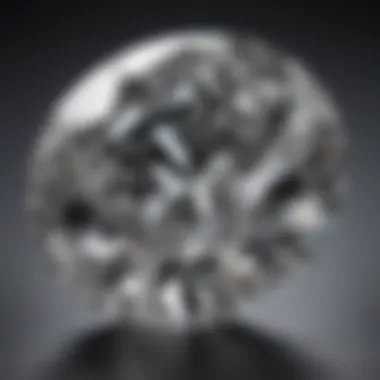
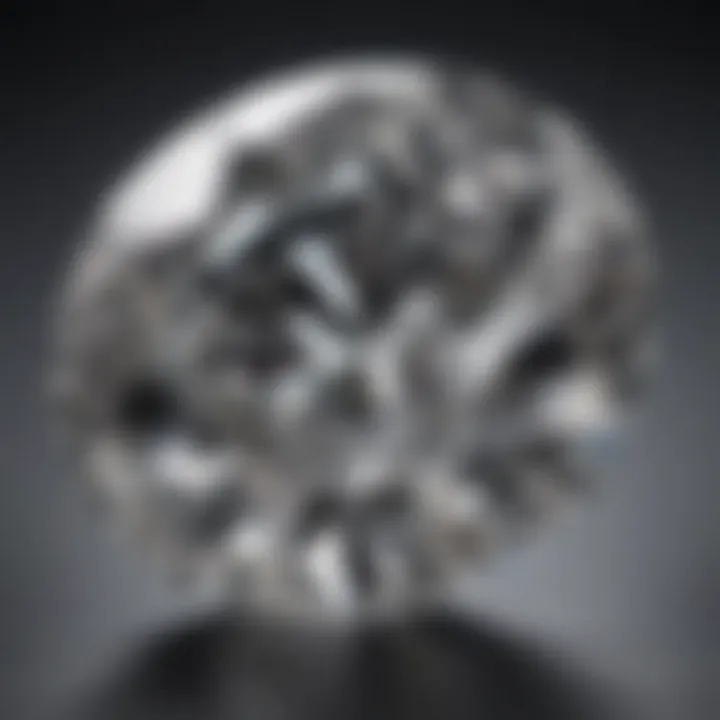
Retailers with experience often advocate for education in their sales strategies. They might educate customers about the grading process, clarifying how the presence of inclusions in i1 diamonds doesn’t diminish their unique beauty. By helping customers understand that buying a diamond—especially an i1—can be a matter of personal preference, retailers foster a more relatable buying experience. This approach can lead to increased trust between customers and retailers.
Buying Considerations for i1 Diamonds
When exploring the realm of i1 diamonds, understanding the buying considerations is absolutely essential. It’s not just about owning a piece of jewelry, but also about making an informed decision that aligns with one’s personal values, preferences, and budget. The i1 rating, which indicates inclusions visible under 10x magnification, carries specific implications for both buyers and sellers.
This rating pushes potential buyers to weigh several factors, beyond mere aesthetics, enriching their overall shopping experience and ensuring lasting satisfaction.
Evaluating Personal Preferences
Personal preferences play a critical role when diving into the i1 diamond market. It’s about more than just what looks shiny in the display case. First, one might consider the consideration of imperfections. While clarity is significant, some may prefer the character that an i1 diamond brings, embracing its uniqueness. For instance, do the visible inclusions bother you, or do they add a touch of personality in the eyes of the beholder?
Secondly, there's style and design to think about. An i1 diamond might shine brilliantly in certain settings or design choices, even accentuating its flaws. Think rings, necklaces, or earrings. Perhaps a vintage setting could complement the imperfections, making them feel less like flaws and more like features. Ultimately, the buyer should reflect on how such personal aesthetics blend with the material qualities of the diamond itself.
Price Points and Value Proposition
The price points for i1 diamonds can vary significantly, influenced by factors like carat weight, color, and overall demand. Generally, since i1 diamonds possess visible inclusions, they're more affordable compared to higher clarity grades. This ** affordability** makes them attractive for those working within a tighter budget without sacrificing the grandeur of owning a diamond.
Potential buyers might uncover a unique value proposition. In practical terms, an i1 diamond could serve as an excellent entry-point for novice collectors or as a meaningful gift that doesn't break the bank. However, it’s crucial to assess the specific value of the diamond in relation to preferences. For instance, if a clearer diamond meets one’s criteria more closely, the added cost might justify the purchase.
The End for Buying Considerations
All in all, understanding the nuances in the buying process for i1 diamonds not only makes one a savvy shopper but also elevates the overall experience from the mundane to the meaningful. It empowers buyers to make choices that resonate with their individual tastes and lifestyles, ensuring their investment holds both material and sentimental value for years to come.
"Every diamond tells a story, even the ones seen through a lens of imperfection."
In the world of gemstones, where clarity often gets the spotlight, i1 diamonds represent a beautiful contradiction. They remind us that beauty lies in imperfections and that personal preference reigns supreme. Understanding these buying considerations ensures that customers feel confident and excited about their purchase.
Care and Maintenance of i1 Diamonds
Maintaining the allure and brilliance of an i1 diamond is crucial not just for its aesthetic appeal but also for ensuring its longevity. An i1 diamond, being on the lower end of the clarity scale, often features inclusions that can affect its appearance. Thus, understanding how to care for and maintain these unique gems is vital, especially for gemstone enthusiasts, collectors, and jewelry designers.
Cleaning Techniques and Products
Proper cleaning is key to keeping your i1 diamond sparkling and free from grime. Routine cleaning can significantly enhance the diamond's natural beauty and longevity.
- Gentle Soap and Water Solution: A simple solution of warm water mixed with mild dish soap works wonders. Soak the diamond in this mixture for around 20 minutes. This loosens dirt and oil.
- Soft Brush Method: After soaking, use a soft-bristled toothbrush to gently scrub the diamond, focusing on the underside where dirt tends to accumulate. Be sure to avoid harsh chemicals or abrasive materials that could scratch the stone.
- Ultrasonic Cleaners: Although a bit of an investment, these devices can be effective for deeper cleans. Just ensure that your diamond is secure and won’t get dislodged in the process. It’s also wise to check if your i1 diamond can handle the vibrations, as some inclusions might make it more sensitive.
"Regular cleaning not only enhances the shine but also allows for an inspection of the diamond's clarity, revealing any new inclusions that may require attention."
Protective Measures for Longevity
To ensure that your i1 diamond remains as stunning as the day you bought it, taking preventive measures is equally important.
- Storage Solutions: When not worn, store your diamond in a soft pouch or a separate compartment of a jewelry box. This avoids scratches from other jewelry pieces.
- Routine Inspections: Schedule regular check-ups with a gemologist or jeweler. They can spot any issues before they escalate, ensuring your diamond stays in top shape.
- Avoiding Harsh Chemicals: When engaging in household chores or gardening, it's best to remove your diamond jewelry. Chemicals like bleach can damage both the diamond and its setting.
i1 Diamonds in Jewelry Trends
In the bustling world of jewelry, i1 diamonds have carved a niche for themselves, often overlooked yet brimming with potential. Understanding their role in current jewelry trends sheds light on several fascinating aspects. The allure of i1 diamonds lies not just in their apparent imperfections, but also in their adaptability and the unique stories they carry. This section dives into the contemporary design influences that embrace i1 diamonds and unveils the cultural significance that surrounds these gemstones.
Contemporary Design Influences
The landscape of jewelry design is ever-changing, influenced by shifts in consumer preferences and cultural dynamics. i1 diamonds are starting to find a place in contemporary design, where the concept of beauty is expanding beyond traditional clarity norms. Designers, particularly those focused on sustainability and affordability, have begun to incorporate these stones in their collections, recognizing that they can often offer more character compared to their flawless counterparts.
- Unique Aesthetic: i1 diamonds present an array of inclusions and blemishes, which give each stone a distinct personality. They invite a richer narrative, reminding wearers that perfection isn’t the only path to beauty.
- Sustainability Factor: With growing concerns about ethical sourcing and environmental impact, using i1 diamonds can resonate with eco-conscious consumers. These diamonds are often more affordable, allowing for creative reinvestment in thoughtful designs.
- Trend of Imperfection: The modern aesthetic often celebrates imperfection. Whether it’s the rising popularity of asymmetrical jewelry or the raw look of unpolished stones, i1 diamonds tap into this trend, making them attractive in various collections.
As designers adopt a fresh perspective towards these diamonds, a new appreciation blossoms. In settings that best show off their individuality, the raw charm of i1 diamonds often shines through, appealing especially to younger buyers looking for unique pieces that tell a story.
Cultural Significance and Symbolism
Beyond the physical attributes of i1 diamonds, their cultural significance provides depth to their value. In many cultures, diamonds symbolize love, commitment, and resilience. However, with i1 diamonds, there’s a fascinating layer of complexity that adds richness to these meanings.
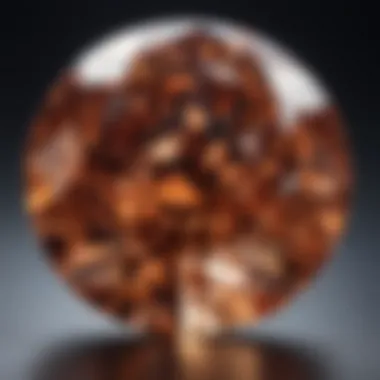
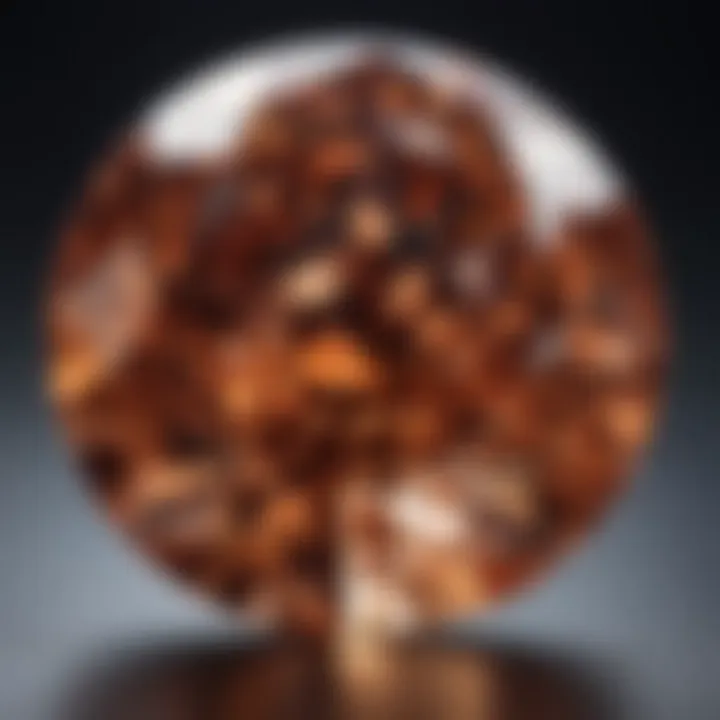
- Storytelling Elements: Each inclusion can be viewed as a reminder of life's imperfections, making i1 diamonds embodiments of personal journeys and stories.
- Symbol of Authenticity: Choosing an i1 diamond can mirror one’s embrace of authenticity in a world often obsessed with flawless appearances. It represents a celebration of individuality, highlighting the notion that everyone has their own unique charm.
- Rising Acceptance: As cultural narratives evolve, the stigma around lower clarity ratings like i1 is diminishing. Society is more inclined towards recognizing that value isn't solely tied to clarity—stories and connections matter too.
"An i1 diamond is like a well-worn book: it might not have a perfect cover, but the tales it holds within are unlike any other."
The journey of i1 diamonds in jewelry trends is a pointer towards a broader acceptance of diversity in beauty. By celebrating these stones, we open a dialogue that encourages authenticity in personal choices, gifting each piece not just a moment, but a legacy.
Emotional and Sentimental Value of i1 Diamonds
When it comes to selecting diamonds, clarity and quality often hog the spotlight. Yet, there's another layer lying beneath the polished surface—one that speaks to the heart of buyers and recipients alike. Emotional and sentimental value encircles the i1 diamond rating just as it does every gem. Understanding this value is paramount in grasping why people choose these diamonds, not just for their visual appeal, but also for the stories they carry.
Many perceive diamonds as mere objects of luxury, but more often than not, they are vessels of personal narratives. At the core, an i1 diamond isn't always about flawless clarity; rather, it's about the feelings and connections it embodies. Whether it’s a birthday gift or an engagement ring, these diamonds can encapsulate profound memories.
The story behind an i1 diamond enhances its value exponentially. A recipient might understand the journey of the diamond—where it was mined, who picked it out, and how it became a symbol of commitment or friendship. These factors combined can create a sense of attachment that outshines any grading manual.
"A diamond is not just a rock. It’s a piece of someone's memory, a touch of love forever encapsulated in time."
Personal Stories and Testimonials
Often, real-life accounts paint a vivid picture of why individuals are drawn to i1 diamonds. For one couple, an i1 diamond ring signified more than just a financial investment; it represented their resilient love. After spending years traveling on a shoestring budget, they finally saved up for a modest but meaningful engagement ring that had an i1 rating. The inclusions were minor, but to them, it was perfect because it mirrored their shared journey—imperfect yet beautiful.
Another account comes from a mother who gifted her daughter an i1 diamond for her high school graduation. The diamond had been passed down in the family, slightly flawed, but full of history. Every scratch and inclusion told a story of love, tenacity, and resilience. The daughter, wiping a tear away, remarked how she cherished the ring more than any other glittering alternative.
These stories reflect authentic experiences that resonate with many. They embody a recognition that sometimes, clarity doesn’t matter as much as the love behind the gift.
Gift-Giving Considerations
When giving an i1 diamond as a gift, there are elements to bear in mind that can enhance the emotional weight of the offering. Here are some things to consider:
- Context Matters: Understanding the life stage of the recipient plays a crucial role. A young couple might see more value in a thoughtful, albeit i1-rated diamond, compared to an older couple reiterating a long-held commitment.
- Presentation: How the diamond is presented can amplify its sentimental value. A heartfelt note explaining the diamond’s journey, its significance, or even a simple recounting of shared experiences could turn the gift into a treasure.
- Customization: Adding a personal touch, such as an engraving or incorporating it into a unique design, can change perceptions of an i1 diamond. By visualizing it in a new light, the recipient may view its qualities beyond the standard ratings.
Ultimately, the emotional and sentimental value of i1 diamonds transcends their physical blemishes. When thoughtfully considered, these diamonds become part of narratives, connecting people in ways that high clarity grades alone never could.
Future of i1 Ratings in the Diamond Market
The future of i1 ratings holds significant weight as it shapes the landscape of the diamond market. With ongoing shifts in consumer preference, technology, and ethical considerations, understanding these influences can help buyers make educated decisions while purchasing diamonds, particularly those with an i1 rating. I1 diamonds, often positioned at the lower end of the clarity spectrum, have been subject to scrutiny, yet their relevance can't be overlooked. As consumers increasingly seek affordability without sacrificing beauty, i1 diamonds are gaining ground. In this section, we'll explore two pivotal areas influencing the future of i1 ratings: emerging trends and the importance of sustainability.
Emerging Trends and Innovations
In the realm of diamonds, trends are evolving as quickly as a flash of light through a gem. One vital trend is the increasing presence of technology in diamond grading. Advanced imaging techniques, such as 3D scanning and AI-assisted analysis, are being integrated into clarity assessments. This not only enhances accuracy but also provides consumers with a more relatable visualization of inclusions in diamonds rated i1. Buyers can now see exactly what they’re getting, which demystifies the grading process and the products they're interested in.
Moreover, the rise of lab-grown diamonds adds another layer to the conversation. These diamonds, created in controlled environments, are often clearer and more consistent in quality than their natural counterparts. As consumers become more aware of these alternatives, retailers may need to reconsider how they position i1 diamonds in their offerings. Lab-grown stones can provide a competitive edge that could sway buyers toward favoring clarity over traditional grading. This innovation represents a shift in market perception that i1 diamonds could harness if appropriately marketed.
Sustainability and Ethical Considerations
As conversations about sustainability continue to gain momentum, the ethical sourcing of diamonds stands front and center. Consumers today are more conscious than ever about the implications of their purchases, seeking to ensure that the diamond they buy is not only beautiful but also responsibly sourced. For i1 diamonds, this can be a double-edged sword. While affordability is appealing, the dialogue around ethical sourcing is crucial.
Retailers must clearly convey their commitment to responsible practices in acquiring i1 diamonds. This includes documenting the supply chain and ensuring fair labor practices. Diamonds with a transparent history can help shift negative perceptions that often accompany lower-grade options. Brands that highlight their dedication to sustainability may find increased support from consumers willing to pay a premium for ethically sourced goods, even in the i1 category.
"Sustainable practices are likely to influence buyer choices significantly, even when clarity ratings might suggest lower quality. Engaging ethically can result in a positive long-term impact on both brand reputation and consumer trust."
Culmination and Final Thoughts
In reflecting on the journey through the realm of i1 diamonds, it becomes clear that the implications of the i1 diamond rating extend well beyond mere numbers and letters. This clarity grade represents a crossroads of affordability and aesthetic appeal, making it an intriguing option for those in the market for diamonds. Understanding this rating not only fosters informed purchasing decisions, but it also enhances appreciation for these gemstones, regardless of their clarity grade.
Summarizing the i1 Diamond Experience
The experience of purchasing an i1 diamond is unique. While the inclusions associated with an i1 rating are more pronounced than a higher clarity grade, they provide character to the stone. Buyers often relate this to the human experience—no one is perfect, and flaws can tell a story. These stones may still appear stunning, particularly when well-cut, as light can still dance through even less-than-perfect clarity.
It’s essential to gather that many i1 diamonds, when set in the right lighting context, can be breathtaking. The design of the mounting and the type of lighting can significantly alter the visual dynamics of the stone itself. By prioritizing aesthetics along with a realistic understanding of the diamond's characteristics, buyers can leave with a piece that resonates with their personal taste and budget.
Encouraging Informed Choices
Navigating the world of diamonds, especially with a focus on i1 ratings, necessitates a balanced approach. Before settling on a purchase, potential buyers should ask themselves a few key questions:
- What does this diamond represent for me? Understanding the emotional significance of a purchase is vital. Whether it’s a milestone like an engagement or simply a personal treat, the motivations behind the purchase can influence choice.
- How much do I value clarity versus size or design? A common dilemma is weighing the visibility of inclusions against other attractive factors of a diamond. A larger diamond with an i1 rating might have more visually striking presence than a smaller, flawless stone in some instances.
- Am I willing to prioritize gem characteristics over traditional benchmarks?
- Consider alternative grading metrics. Sometimes, exploring other grading dimensions can lead to surprise finds.
- Trust your aesthetic instincts. After all, beauty lies in personal perception.
By approaching this purchase holistically, potential buyers can make grounded choices that honor their desires and circumstances. Ultimately, informed choices concerning i1 diamonds have the potential to enrich both personal jewelry collections and the wider appreciation of diamonds in general.
In the end, understanding one’s preferences combined with clarity about what different ratings entail opens the door to making wiser, more satisfied purchases.



